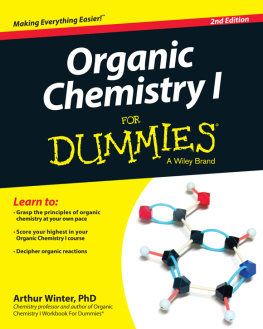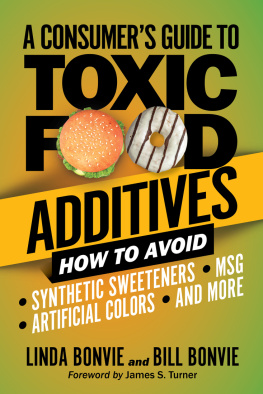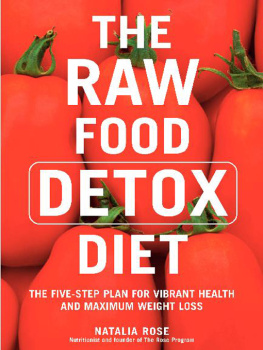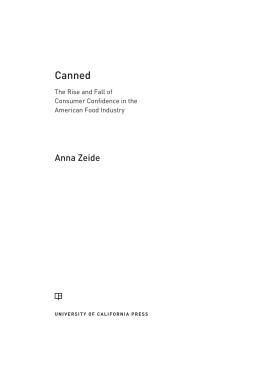Winter - Poisons in your food: the dangers you face and what you can do about them
Here you can read online Winter - Poisons in your food: the dangers you face and what you can do about them full text of the book (entire story) in english for free. Download pdf and epub, get meaning, cover and reviews about this ebook. City: New York, year: 2012;1991, publisher: Crown Publishing Group, genre: Politics. Description of the work, (preface) as well as reviews are available. Best literature library LitArk.com created for fans of good reading and offers a wide selection of genres:
Romance novel
Science fiction
Adventure
Detective
Science
History
Home and family
Prose
Art
Politics
Computer
Non-fiction
Religion
Business
Children
Humor
Choose a favorite category and find really read worthwhile books. Enjoy immersion in the world of imagination, feel the emotions of the characters or learn something new for yourself, make an fascinating discovery.

Poisons in your food: the dangers you face and what you can do about them: summary, description and annotation
We offer to read an annotation, description, summary or preface (depends on what the author of the book "Poisons in your food: the dangers you face and what you can do about them" wrote himself). If you haven't found the necessary information about the book — write in the comments, we will try to find it.
Poisons in your food: the dangers you face and what you can do about them — read online for free the complete book (whole text) full work
Below is the text of the book, divided by pages. System saving the place of the last page read, allows you to conveniently read the book "Poisons in your food: the dangers you face and what you can do about them" online for free, without having to search again every time where you left off. Put a bookmark, and you can go to the page where you finished reading at any time.
Font size:
Interval:
Bookmark:
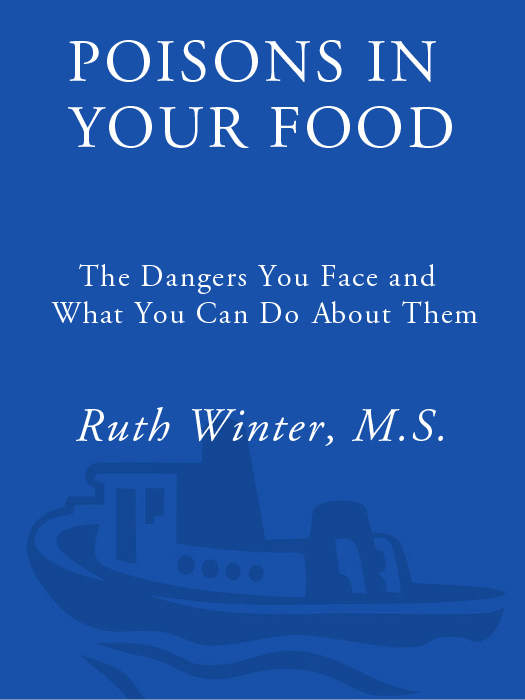
ALSO BY THE AUTHOR
Beware of the Food You Eat
How to Reduce Your Medical Bills
Ageless Aging
Cancer-Causing Agents
A Consumers Dictionary of Cosmetic Ingredients
A Consumers Dictionary of Food Additives

Copyright 1969, 1991 by Ruth Winter, M.S.
All rights reserved. No part of this book may be reproduced or transmitted in any form or by any means, electronic or mechanical, including photocopying, recording, or by any information storage and retrieval system, without permission in writing from the publisher.
Published by Crown Publishers, Inc., 201 East 50th Street, New York, New York 10022. Member of the Crown Publishing Group.
CROWN is a trademark of Crown Publishers, Inc.
Library of Congress Cataloging-in-Publication Data
Winter, Ruth, 1930
Poisons in your food: the dangers you face and what you can do about them / by Ruth Winter.New, rev., and updated ed.
p. cm.
1. Food adulteration and inspection. 2. Food contamination.
I. Title.
TX533.W55 1990
641.31 dc20
89-70833
eISBN: 978-0-307-82934-4
v3.1
This book is unique!
I researched and wrote the first edition of Poisons in Your Food in the late 1960s when I was a young newspaper science editor and the mother of small children.
I discovered at the time that there were:
Antibiotics, in animal feed, that affected humans who ate meat and drank milk.
Dangerous pesticide residues in our food.
Additives in our meals that could cause cancer.
Drinking waters polluted with industrial wastes.
Foodborne illnesses that were common, could be lethal, but were often unrecognized and unreported.
Before I researched the first edition of Poisons in Your Food, I thought that government inspectors looked over the shoulders of food manufacturers and vendors all along the line. When I discovered nothing could be further from the truth, I pointed out the inadequacies in our food inspection systems. After Poisons in Your Food was initially published, I was described as a nut among the berries and the book as sensational, hysterical, or fictional.
Today, I am a grandmother and the author of twenty-three other books and hundreds of newspaper and magazine articles about developments in science and health.
I have had the unusual privilege of being able to research anew the same subjects that I investigated more than twenty years ago.
I have lived to see such conservative organizations as the American Cancer Society and the National Cancer Institute expound upon the links between cancer and diet. Today the American Heart Association and the National Heart Institute are leading the battle to have food processors lower fat and salt in foods. The National Academy of Sciences, the Environmental Protection Agency, the General Accounting Office, and other government agencies are now citing flaws in our ability to protect food and water from pesticides, nitrates, and other pollutants, flaws about which I reported more than twenty years ago.
As you will read in this book, the Food and Drug Administration and the National Academy of Sciences admit much is unknown about the more than three thousand chemicals deliberately or inadvertently added to our food.
United States Centers for Disease Control experts maintain that those foodborne illnesses reported represent just a small percentage of the cases that actually occur.
In researching this new edition, I have found that during the past twenty years, some things have gotten better, some have gotten worse, and, frustratingly, many things have remained the same.
The purpose of this book is, as it was when the first edition appeared, to convince you that not everything causes cancerthat not everything you eat is bad for you!
The aim of this book is to describe the situation and to educate you about your choices. You can choose a healthier diet! You can, by the power of your pocketbook, make food manufacturers and vendors provide healthier selections at the supermarket and in the restaurant. They want to sell their products to you. They are, therefore, exquisitely sensitive to your desires.
You can, by your own knowledge, protect yourself and your family from a great deal of foodborne and waterborne illness. If you are pregnant or have small children, or if you are elderly or have a weakened immune system, information in this book may prevent serious illness and even death.
You cannot do anything about your heredity or your taxes, but you do have the power to choose and handle your food and water wisely.
 Guess What You Just Ate!
Guess What You Just Ate!W hen Poisons in Your Food was first published in 1969, I wrote:
When you sit down to eat a meal in your own home or in one of the 540,000 eating and drinking places in the United States, you take it for granted that the food is wholesome and nutritious. Unless you have access to special knowledgemedical data, reports of qualified investigators, and findings behind the vital statisticsit may not occur to you that it is now impossible for you to eat an ordinary meal, or to give a child milk from a bottle, can, carton, or breast, that is not contaminated with pesticides. Even a babys diet can be dangerous.
The bread you put in your mouth daily is literally embalmed to keep it feeling soft and fresh long after it isnt,
More than twenty years later, there are now 720,000 food-service establishments, but what I wrote in 1969 holds true.
Ten pesticides proven to cause cancer are still leaving residues in raw and processed foods and in breast milk.
We are still endangering our children and theirs with toxic residues in water and food.
Illnesses from bacterial, viral, and chemical contaminants in food are increasing.
Have you had a case of intestinal flu and/or diarrhea this year? Chances are that you have.
Frank Young, M.D., Ph.D., commissioner of the United States Food and Drug Administration (FDA), said in 1988, Unfortunately, microbial contamination and outbreaks of food-borne illness have continued at an alarming rate. According to estimates by our own FDA scientists, between 21 million and 81 million cases of food-borne diarrheal disease occur annually in the United States.
The Centers for Disease Control (CDC), understaffed and overburdened by the AIDS epidemic, has started reporting foodborne illnesses every five years instead of every year and at the time of this writing are still far behind schedule. Ironically, AIDS victims and others with weakened immune systems are the most vulnerable to foodborne illnesses and may succumb to intestinal upsets that would not be fatal to healthy, young adults.
The CDC takes reports from state health departments, not individuals; but did you report to your health department your latest bout of stomach upset brought on by something you ate?
Most of the time foodborne illnesses are not reported because:
The discomfort may be self-limiting and not require medical attention.
The illness, although it does require medical attention, is not recognized by either the victim or the physician as being related to food.
Do you assume that the food you eat at home or in a restaurant has been inspected?
Font size:
Interval:
Bookmark:
Similar books «Poisons in your food: the dangers you face and what you can do about them»
Look at similar books to Poisons in your food: the dangers you face and what you can do about them. We have selected literature similar in name and meaning in the hope of providing readers with more options to find new, interesting, not yet read works.
Discussion, reviews of the book Poisons in your food: the dangers you face and what you can do about them and just readers' own opinions. Leave your comments, write what you think about the work, its meaning or the main characters. Specify what exactly you liked and what you didn't like, and why you think so.


